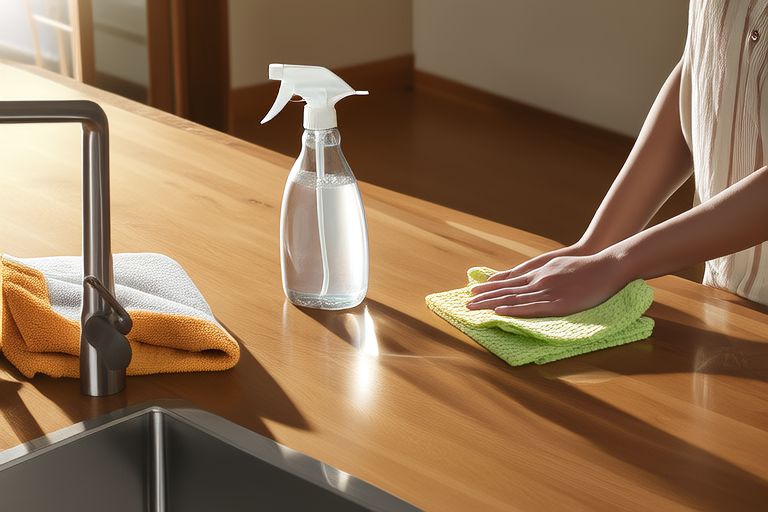Mastering the Art of Home Surface Cleaning: Techniques That Actually Work
Introduction
Keeping your home surfaces clean is not just about aesthetics; it’s also crucial for maintaining a healthy living environment. Dust, allergens, and bacteria can accumulate on surfaces, posing health risks to you and your family. Proper cleaning techniques can significantly reduce these risks while saving time and effort. In this article, we will explore effective methods to clean various surfaces in your home, from kitchen countertops to bathroom tiles. Whether you’re a seasoned cleaner or a beginner, these tips will help you achieve sparkling results.
Understanding Different Surfaces
Before diving into specific cleaning techniques, it’s essential to understand the different types of surfaces in your home. Each surface has unique characteristics that require tailored cleaning approaches. Here’s a breakdown of common household surfaces:
1. Wood Surfaces
Wooden surfaces, such as dining tables, cabinets, and floors, require gentle care. Harsh chemicals can strip away the natural oils and damage the finish. Use a soft cloth dampened with water and a mild detergent. For deeper cleaning, apply a wood-specific cleaner and follow up with a protective polish to maintain the wood’s luster.
2. Ceramic and Porcelain Surfaces
Ceramic and porcelain surfaces, found in kitchens and bathrooms, are durable but can be sensitive to acidic cleaners. Opt for a pH-neutral cleaner to avoid etching the surface. For stubborn stains, gently scrub with baking soda and vinegar, followed by a thorough rinse and dry.
3. Glass and Mirrors
Glass and mirror surfaces are prone to fingerprints and smudges. Avoid using paper towels, which can leave lint behind. Instead, use microfiber cloths or newspaper for streak-free cleaning. Apply a glass cleaner or a mixture of water and white vinegar for best results.
4. Stainless Steel Appliances
Stainless steel appliances, like refrigerators and ovens, require specialized care to maintain their shine. Clean with a stainless steel cleaner or a solution of water and mild dish soap. Use a soft cloth and wipe in the direction of the grain to prevent scratches.
Effective Cleaning Techniques
Now that you understand the different surfaces, let’s dive into some effective cleaning techniques that work wonders without requiring excessive effort.
1. Regular Maintenance
Prevention is key when it comes to surface cleaning. Regular maintenance can save you time and energy in the long run. Wipe down surfaces daily to remove light dust and spills. This simple habit can prevent the buildup of grime and make deep cleaning sessions less frequent.
2. DIY Cleaning Solutions
Commercial cleaners can be expensive and sometimes harsh on surfaces. Consider making your own cleaning solutions using common household items. For example, a mixture of vinegar and water works well for most surfaces, while baking soda can tackle tough stains. These natural alternatives are cost-effective and environmentally friendly.
3. Microfiber Cloths
Invest in high-quality microfiber cloths. These cloths are highly absorbent and can trap dirt and dust effectively. They are especially useful for cleaning glass and mirrors, as they leave no streaks. Microfiber cloths can be reused multiple times, making them a sustainable choice for regular cleaning tasks.
Practical Tips and Case Studies
To help you apply these techniques in real-life scenarios, here are some practical tips and case studies.
Case Study: Kitchen Countertops
Problem: The kitchen countertops have accumulated grease and food stains over time.
Solution:
- Preparation: Start by removing any loose debris with a dry cloth.
- Cleaning: Mix equal parts water and white vinegar in a spray bottle. Spray the solution onto the countertop and let it sit for a few minutes.
- Scrubbing: Use a non-abrasive sponge to scrub the surface gently.
- Rinsing: Rinse with warm water and dry thoroughly with a microfiber cloth.
- Maintenance: Wipe down the countertops daily to prevent future buildup.
Case Study: Bathroom Tiles
Problem: Grout lines between tiles are stained and discolored.
Solution:
- Preparation: Ensure the area is well-ventilated.
- Cleaning: Create a paste using baking soda and water. Apply the paste to the grout lines and let it sit for 10-15 minutes.
- Scrubbing: Use an old toothbrush to scrub the grout lines thoroughly.
- Rinsing: Rinse with warm water and dry the tiles with a towel.
- Maintenance: Apply a sealant to the grout lines periodically to prevent future staining.
Conclusion
Mastering the art of home surface cleaning involves understanding the unique properties of each surface and employing effective cleaning techniques. By incorporating regular maintenance, using DIY cleaning solutions, and utilizing tools like microfiber cloths, you can keep your home surfaces looking pristine with minimal effort. Remember, consistency is key to maintaining a clean and healthy living environment. Implement these techniques today and enjoy the benefits of a sparkling home!
Actionable Advice:
- Start small: Begin with one room or surface at a time to build confidence.
- Schedule regular cleaning sessions: Incorporate cleaning into your weekly routine to prevent buildup.
- Stay informed: Keep learning about new cleaning products and techniques to enhance your cleaning skills.
By following these guidelines, you’ll be well on your way to mastering the art of home surface cleaning. Happy cleaning!
